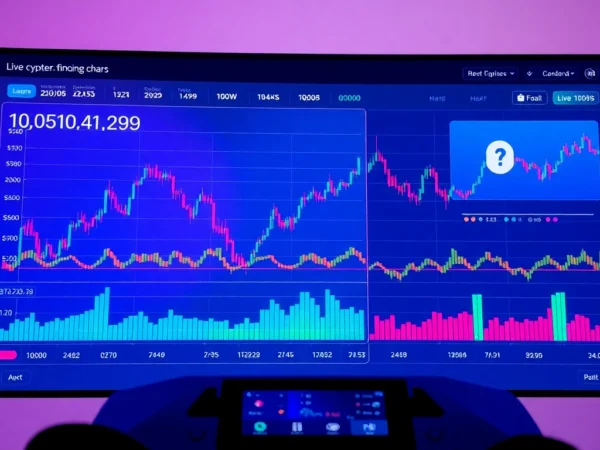Comprehensive Guide to Stocks and Shares Reporting for Investors and Analysts
Understanding Stocks and Shares Reporting: Key Concepts and Definitions
1.1 What Is Stocks and Shares Reporting and Why It Matters
Stocks and Shares Reporting serves as a vital tool for investors, analysts, and financial professionals to understand the current state and future outlook of equity markets. It involves the systematic collection, analysis, and presentation of data related to publicly traded companies, market conditions, and economic indicators. In essence, this reporting provides a window into the financial health of corporations and the overall market sentiment, enabling stakeholders to make informed investment decisions.
The importance of accurate and timely stock reports cannot be overstated. They influence investor confidence, guide portfolio adjustments, and shape market strategies. For example, during volatile periods, comprehensive reports help discern whether market swings are driven by fundamentals or speculative activity. As markets evolve amid geopolitical shifts, technological innovations, and policy changes, staying ahead with precise stock and shares reporting equips investors with a competitive edge.
To explore the latest insights and stay ahead in investment strategies, it’s essential to understand that Stocks and Shares Reporting is not just about numbers but a reflection of economic realities, corporate performance, and investor psychology.
1.2 Types of Market Reports and Their Impact on Investment Decisions
Market reports come in various formats, each serving different informational needs and influencing distinct aspects of investment decision-making:
- Earnings Reports: Provide quarterly or annual financial results, revealing a company’s profitability, cash flow, and operational efficiency. These reports help investors assess whether a stock is undervalued or overvalued relative to its earnings.
- Market Commentary and Analysis: Offer expert insights, trend forecasts, and contextual explanations of market movements. Such reports can highlight emerging sectors or warn of potential downturns.
- Economic Indicators: Include GDP growth rates, inflation data, employment figures, and interest rates. These macroeconomic reports influence the broader market outlook and sector-specific strategies.
- Technical Reports: Focus on price charts, volume patterns, and indicator signals to project future price movements, supporting short-term trading decisions.
Each report type impacts investment strategies differently—from fundamental analysis focusing on earnings and financial health to technical analysis emphasizing market momentum. Combining these insights can lead to more robust investment decisions, emphasizing the importance of comprehensive reporting approaches.
1.3 Essential Data Points to Monitor in Stocks and Shares Reports
For effective analysis, investors should focus on key data points that reveal a company’s financial stability, growth potential, and valuation metrics:
- Revenue and Earnings: Indicators of a company’s sales performance and profitability.
- EPS (Earnings Per Share): Measures profitability on a per-share basis, useful for comparing companies.
- Price-to-Earnings Ratio (P/E): Valuation metric evaluating stock price relative to earnings.
- Dividend Yield and Payout Ratios: Show returns and dividend sustainability.
- Debt-to-Equity Ratio: Assesses financial leverage and risk levels.
- Cash Flow Statements: Highlight liquidity and operational efficiency.
- Market Capitalization and Volume: Reflect the size of the company and investor interest.
Monitoring these data points regularly ensures investors can detect early signs of financial distress or growth opportunities, aligning their strategies with real-time market realities.
2. How to Read and Interpret Stock Market Reports Effectively
2.1 Deciphering Financial Statements and Earnings Reports
Financial statements—namely the balance sheet, income statement, and cash flow statement—are the cornerstone of stocks and shares reporting. A thorough understanding of these documents allows investors to evaluate a company’s true financial health.
The income statement reveals profitability over a period, highlighting revenue, expenses, and net income. Investors scrutinize trends in earnings growth or decline, which directly influence stock valuations. For example, steady growth in earnings per share often indicates durable competitive advantages.
The balance sheet provides a snapshot of assets, liabilities, and shareholder equity, revealing financial stability and leverage levels. A company with strong assets and manageable debt levels typically presents lower risk.
Cash flow statements detail operational, investing, and financing cash movements. Positive operational cash flow indicates a company’s ability to sustain operations and fund growth without external financing.
Interpreting these statements together empowers investors to assess profitability, liquidity, and leverage, enabling more accurate valuation and risk assessment.
2.2 Analyzing Market Trends and Price Movements
Understanding market trends is crucial for timing investments and managing risk. Technical analysis employs charts and indicators like moving averages, RSI (Relative Strength Index), and MACD (Moving Average Convergence Divergence) to identify bullish or bearish signals.
For example, a stock crossing above its 200-day moving average may signal a longer-term uptrend, while divergence between price and momentum indicators could forewarn of trend reversals. Recognizing these patterns helps traders capitalize on momentum while avoiding pitfalls.
Moreover, analyzing macroeconomic trends—such as interest rate changes, geopolitical tensions, or commodity price shifts—can contextualize stock movements within broader economic cycles. Staying attuned to these trends enhances predictive accuracy.
2.3 Identifying Signal Indicators in Stock and Shares Data
Technical and fundamental indicators serve as signals for market entry and exit points:
- Moving Averages: Smooth out price data to identify trend directions.
- Volume Analysis: Confirms price moves—rising volume with rising prices indicates strong buying interest.
- RSI and Stochastics: Measure momentum to identify overbought or oversold conditions.
- Dividend Announcement Impact: Sudden increases or decreases can signal shifts in company outlook or cash flow stability.
Practical interpretation involves combining these indicators; for instance, a stock breaking resistance with high volume and strong RSI readings can be a compelling buy signal.
3. Best Practices for Accurate Stocks and Shares Reporting
3.1 Data Collection and Verification Strategies
Accurate reporting begins with rigorous data collection. Sources such as company filings, regulatory disclosures, and reputable financial news outlets should form the core of your data pool. Cross-verification across multiple sources ensures reliability, reducing the risk of basing decisions on erroneous information.
Implementing automation tools, like financial data aggregators or APIs, enhances efficiency and minimizes human error. For instance, platforms that automatically update financial metrics upon new filings provide real-time insights, crucial during volatile markets.
Periodic audits and data validation protocols strengthen the integrity of reports, ensuring that analysis reflects current and verified data.
3.2 Utilizing Technology and Tools for Precise Reporting
Technology plays a pivotal role in delivering precise stock reports. Advanced analytics platforms, AI-driven algorithms, and machine learning models can detect patterns and anomalies beyond human capability. Tools like Bloomberg Terminal, FactSet, and specialized APIs enable comprehensive data collection and analysis.
Automated reporting dashboards help visualise key metrics, facilitate scenario analysis, and generate alerts on significant market movements. For example, setting thresholds for specific indicators ensures prompt response to emerging signals.
Leveraging AI models, such as predictive analytics, can augment fundamental and technical analysis, offering probabilistic forecasts for stock performance based on historical data and market variables.
3.3 Ensuring Compliance and Avoiding Common Reporting Errors
Regulatory compliance is critical. Adhering to standards like IFRS or GAAP ensures transparency and comparability across reports. Regular updates on regulatory changes help prevent non-compliance.
Common errors—such as misreported earnings, delayed disclosures, or misinterpretation of data—can significantly impair decision-making. Establishing checks like peer reviews, automated validation rules, and clear documentation mitigates these risks.
Training staff on best practices in data handling and reporting standards enhances accuracy and legal adherence.
4. Leveraging Stocks and Shares Reports for Investment Growth
4.1 Applying Reports to Develop Trading Strategies
Accurate reports enable the formulation of robust trading strategies. Trend-following, value investing, and momentum trading all rely heavily on insights from stock reports. For example, identifying undervalued stocks through fundamental metrics combined with technical confirmation can create lucrative entry points.
Developing comprehensive models that integrate both qualitative and quantitative data enhances strategy resilience. Regularly updating these models ensures alignment with evolving market conditions.
4.2 Integrating Market Reports with Fundamental and Technical Analysis
Combining fundamental insights—like earnings quality and macroeconomic impacts—with technical indicators provides a holistic view. For instance, an earnings report showing strong growth coupled with bullish technical signals strengthens confidence for a buy decision.
This integrated approach minimizes risks by confirming signals across different analytical dimensions, leading to more confident and profitable trades.
4.3 Case Studies of Successful Investment Decisions Based on Reporting
Real-world examples demonstrate the power of precise reporting. For instance, during the 2020 market downturn, companies with strong earnings reports and solid cash flows recovered faster, facilitating strategic investments. Similarly, traders who relied on technical indicators presented in detailed reports capitalized on breakout signals, resulting in significant gains.
These case studies underscore that diligent analysis of comprehensive stock reports can lead to superior investment outcomes when combined with disciplined portfolio management.
5. Future Trends and Challenges in Stocks and Shares Reporting
5.1 The Role of Artificial Intelligence and Automation
AI-driven technologies are transforming stocks and shares reporting by automating data collection, anomaly detection, and predictive analytics. Machine learning models analyze vast datasets to forecast stock movements with increasing accuracy, enabling proactive decision-making.
For example, AI systems can detect early signals of earnings surprises or market sentiment shifts, giving traders a competitive edge. Automation also streamlines compliance reporting, reducing manual errors and increasing efficiency.
5.2 Navigating Regulatory Changes and Data Privacy Concerns
As regulatory environments evolve, especially with increasing data privacy regulations, reporting frameworks must adapt. Ensuring compliance with standards like GDPR while maintaining transparency presents a balance challenge.
Enhanced data security measures and clear protocols for data handling are essential to uphold trust and legal standards. Financial institutions and analysts must stay informed on regulatory updates to avoid penalties and reputational damage.
5.3 Preparing for Market Volatility and Reporting Adaptations
Market volatility poses challenges for accurate reporting. Rapid price swings can distort traditional metrics temporarily. Developing real-time reporting capabilities and scenario analysis tools can help investors navigate turbulent times.
In addition, adaptive reporting models that factor in abnormal market conditions ensure investors receive relevant, contextualized insights, allowing for timely strategic adjustments.










